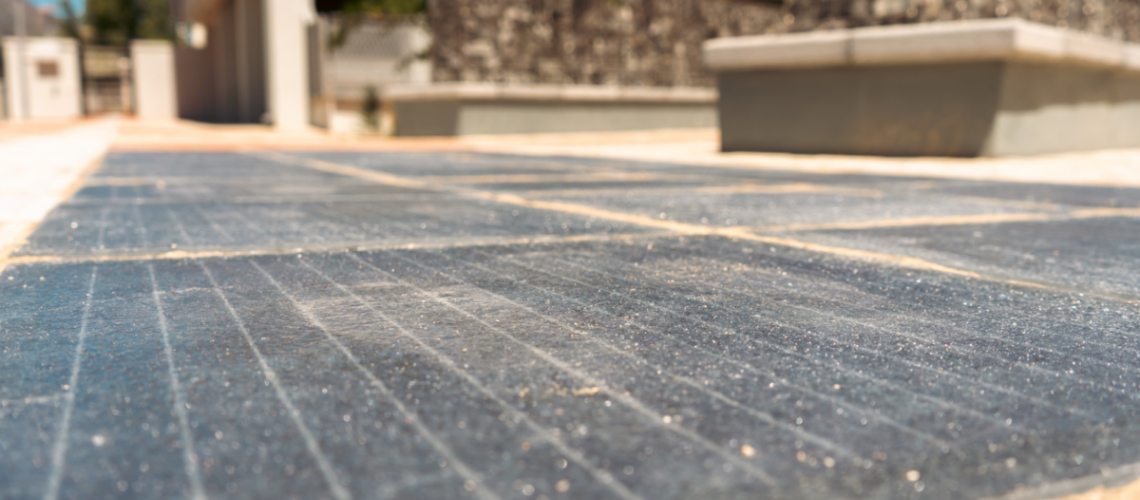Solar Earth claims its 42-Watt sidewalk-mounted PV system can provide 75% of a traffic intersection’s power in an outage, while the utility will have to cover the remainder with batteries or a generator.
The universe of novel lamppost and sidewalk-mounted solar PV solutions appears to be dominated by more busts than success stories. However, one Canadian company that recently deployed a 323-foot stretch of solar on a sidewalk on a Tampa, Florida street corner hopes to buck the trend of ineffective grid intermittency solutions.
Hurricane Ian knocked out the power to more than 295,000 residents as utility TECO Energy began to restore power on September 29. With that effort came scores of fallen trees and debris on streets and restoring traffic signals.
Since then, the City of Tampa’s Smart Mobility group has been piloting a sidewalk-mounted PV system that has produced enough energy to power about 75% of a traffic intersection’s power in the event of an outage, meaning TECO Energy will have to provide the remaining power by battery or another generator source.
In an interview with the Tampa Bay Times this week, the city’s smart mobility manager Brandon Campbell says the city has been tinkering with solar powered traffic light solutions since 2017’s Hurricane Irma dealt just as steady a blow on the city as Ian.
Compared to 35 generators on hand to power traffic lights during outages, the city’s mobility group said at least 71 traffic signals were still in the dark in the 176 square mile city just across from Tampa Bay.
After more than a half-dozen tests in Daxing, China and around the Vancouver, British Columbia suburbs, Solar Earth Technologies Ltd. demonstrated the ability to provide 3.2 kW to 6.1 kW of peak power, though the Tampa pilot falls on the lower end of that range.
For the cost of $45,000, Solar Earth’s sidewalk PV system in Tampa stretches about 323 feet at the intersection of East Cass and North Jefferson Street, in the city’s downtown district.
The city deployed 84 Solar Earth (42W) modules along the downtown stretch and the pilot test found the system provided 3.2 kW of peak back-up power with projected 10-year savings of about $5,000.
Solar Earth’s reported benefits:
- Functional intersection during hurricanes and flooding
- Secure power interface and theft, vandalism resistance
- Excess power continually generated and back into local grid
- Generates return on investment and reduces fossil fuel dependence of power generators
- Minimal O&M and cleaning required
Solar Earth uses a monocrystalline half-cell construction with a single cell measuring at about 22.4 inches square with 3 x 3 celled panels weighing 7.3 pounds, with cells providing 12W of power per square foot of surface area.
The company’s proprietary anti-skid surface has a 30-day water submersion rating and 12-hour oil submersion rating, with a maximum 11,000 pounds static load and 25 mph speed rating, with systems operating safely in ambient temperatures of -4 degrees (F) to 122 degrees (F).
Cells are encased in an IP-68 waterproof connector and UL-rated junction box connected to 10 American Wire Gauge (AWG) wiring whose open circuit voltage is 12.2V and maximum power voltage is 4 amps.
In construction solutions, Solar Earth’s PV solutions are best placed in asphalt and solid surfaces using direct mounted adhesives or clamps, or a molded base foundation using paver or polymer adhesives, creating a low-profile mounted solar strip.
In September, Solar Earth partnered with BASF to co-develop Paving Integrated Photovoltaic (PIPV) panels, which can be installed on new or existing roads and other surfaces.
Solar Earth has deployed more than 12 projects, with installations in the U.S., Canada, South Africa and China. The company has more than 50 projects in development.
The company was formed in July 2015 by a group of scientists, engineers and roadway experts, and in July 2022 was acquired by Nexii Building Solutions Inc, a designer and manufacturer of low-carbon buildings and sustainable city solutions.



